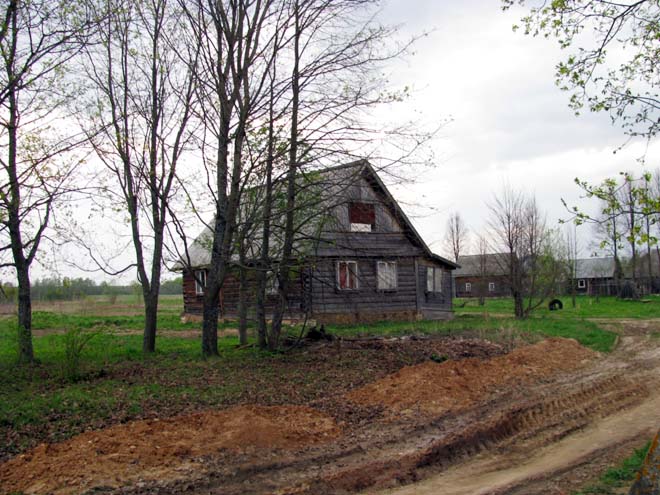Published Date: 2014-03-29 22:02:44
Subject: PRO/EDR> Undiagnosed cerebral disease – Kazakhstan: (AM)
Archive Number: 20140329.2363058
UNDIAGNOSED CEREBRAL DISEASE - KAZAKHSTAN: (AKMOLINSK)
************************************************** ******
A ProMED-mail post
ProMED-mail is a program of the
International Society for Infectious Diseases
Date: 16 Mar 2014 [apologies for the delay in posting due to technical problems. - ProMED]
Source: Tengrinews 15 Mar 2014 [trans. Mod.NP, edited]
http:tengrinews.kz/kazakhstan_news/sonnaya-bolezn-v-kalachah-vyizvana-ne-virusom---uchenyie-251977
A group of Kazakh scientists revealed the 1st results of investigations which were carried out in the "sleeping" village of Kalachi in the Akmolinsk region, a TV channel reported.
Physicians came to the conclusion that the disease that affected tens of inhabitants of the settlement isn't transferred by droplet or any other way. A precise diagnosis has not been established yet. Virologists and radiologists checked almost all the territory of the village; toxicologists examined every house. Radon gas was detected in the air, which, according to one version, may be the cause of sleepy sickness.
Roza Abzalova, doctor of medical science, said that they suspected meningitis or encephalitis. But any viral disease connected with the central nervous system has been excluded. Bacterial disease and radiation have also been excluded. "We did not find those diseases. Now we are investigating several [other] possibilities, and after 20 Mar 2014, I think we will come to some conclusion."
Let's remember that an outbreak of a mysterious disease happened in Kalachi in January 2014 for the 2nd time. Lethargy, sleepiness, disorientation, partial loss of memory, and even hallucinations were observed in residents of the village. People could fall down in the middle of the day and sleep for 2 days. The number of cases has exceeded 30.
Uranium ore was mined in the 1960's to 1990's near the village of Kalachi. Uranium mining ceased in 1991-1992 after the collapse of the Soviet Union; the mines were closed and the area was cultivated.
--
Communicated by:
ProMED-mail
<promed@promedmail.org>
[ProMED could not trace the update promised for 20 Mar 2014.
This is clearly not the same as the sleeping sickness spread by tsetse flies in Africa. It is reminiscent of the nodding syndrome in children in Sudan and Uganda (see ProMED archives listed below) and elsewhere, which is an unexplained epidemic epilepsy (Ref: Scott F. Dowell, James J. Sejvar et al. Nodding Syndrome. EID Volume 19, Number 9, September 2013. http://wwwnc.cdc.gov/eid/article/19/...01_article.htm.) Fig. 4 in that article shows the age distribution of patients at onset of nodding syndrome in Kitgum District, Uganda. The age distribution tightly clusters in persons 5-15 years of age, with only 5 cases aged over 16; the oldest was 27.
But since adults appear to be involved, it is more similar to the mysterious pandemic of encephalitis lethargica that swept the world from 1915-1926, for which no cause has ever been found. Encephalitis lethargica or von Economo disease is an atypical form of encephalitis. Also known as "sleepy sickness", it was 1st described by the neurologist Constantin von Economo in 1917. The disease attacks the brain, leaving some victims in a statue-like condition, speechless and motionless for long periods. No recurrence of the epidemic has since been reported, though isolated cases continue to occur. There is a good review (AH Reid, S McCall, M JM Henry, JK Taubenberger. Experimenting on the Past: The Enigma of von Economo's Encephalitis Lethargica. Journal of Neuropathology and Experimental Neurology Vol. 60, No. 7, July, 2001, pp. 663 670. http://www.ncbi.nlm.nih.gov/pubmed/11444794).
Treatment with Levodopa (L-DOPA) http://www.nlm.nih.gov/medlineplus/d...s/a601068.html and other anti-Parkinson drugs often produce dramatic responses. However, in most of the patients who were given L-DOPA in the 1960s, the amelioration of the disease was short lived. The prescription drug Zolpidem http://www.nlm.nih.gov/medlineplus/d...s/a693025.html, commonly used as a sleeping pill, has been reported to be successful at treating encephalitis lethargica. These could be tried on the patients.
A map of Kazakhstan, showing the Akmola region UN-B in the north, can be found at: http://un-dx.ucoz.com/KZ-MAP.gif. Kalachi is on the northern border of the region which also contains the capital, Astana. See http://mapcarta.com/15392950/Map. - Mod.JW
Subject: PRO/EDR> Undiagnosed cerebral disease – Kazakhstan: (AM)
Archive Number: 20140329.2363058
UNDIAGNOSED CEREBRAL DISEASE - KAZAKHSTAN: (AKMOLINSK)
************************************************** ******
A ProMED-mail post
ProMED-mail is a program of the
International Society for Infectious Diseases
Date: 16 Mar 2014 [apologies for the delay in posting due to technical problems. - ProMED]
Source: Tengrinews 15 Mar 2014 [trans. Mod.NP, edited]
http:tengrinews.kz/kazakhstan_news/sonnaya-bolezn-v-kalachah-vyizvana-ne-virusom---uchenyie-251977
A group of Kazakh scientists revealed the 1st results of investigations which were carried out in the "sleeping" village of Kalachi in the Akmolinsk region, a TV channel reported.
Physicians came to the conclusion that the disease that affected tens of inhabitants of the settlement isn't transferred by droplet or any other way. A precise diagnosis has not been established yet. Virologists and radiologists checked almost all the territory of the village; toxicologists examined every house. Radon gas was detected in the air, which, according to one version, may be the cause of sleepy sickness.
Roza Abzalova, doctor of medical science, said that they suspected meningitis or encephalitis. But any viral disease connected with the central nervous system has been excluded. Bacterial disease and radiation have also been excluded. "We did not find those diseases. Now we are investigating several [other] possibilities, and after 20 Mar 2014, I think we will come to some conclusion."
Let's remember that an outbreak of a mysterious disease happened in Kalachi in January 2014 for the 2nd time. Lethargy, sleepiness, disorientation, partial loss of memory, and even hallucinations were observed in residents of the village. People could fall down in the middle of the day and sleep for 2 days. The number of cases has exceeded 30.
Uranium ore was mined in the 1960's to 1990's near the village of Kalachi. Uranium mining ceased in 1991-1992 after the collapse of the Soviet Union; the mines were closed and the area was cultivated.
--
Communicated by:
ProMED-mail
<promed@promedmail.org>
[ProMED could not trace the update promised for 20 Mar 2014.
This is clearly not the same as the sleeping sickness spread by tsetse flies in Africa. It is reminiscent of the nodding syndrome in children in Sudan and Uganda (see ProMED archives listed below) and elsewhere, which is an unexplained epidemic epilepsy (Ref: Scott F. Dowell, James J. Sejvar et al. Nodding Syndrome. EID Volume 19, Number 9, September 2013. http://wwwnc.cdc.gov/eid/article/19/...01_article.htm.) Fig. 4 in that article shows the age distribution of patients at onset of nodding syndrome in Kitgum District, Uganda. The age distribution tightly clusters in persons 5-15 years of age, with only 5 cases aged over 16; the oldest was 27.
But since adults appear to be involved, it is more similar to the mysterious pandemic of encephalitis lethargica that swept the world from 1915-1926, for which no cause has ever been found. Encephalitis lethargica or von Economo disease is an atypical form of encephalitis. Also known as "sleepy sickness", it was 1st described by the neurologist Constantin von Economo in 1917. The disease attacks the brain, leaving some victims in a statue-like condition, speechless and motionless for long periods. No recurrence of the epidemic has since been reported, though isolated cases continue to occur. There is a good review (AH Reid, S McCall, M JM Henry, JK Taubenberger. Experimenting on the Past: The Enigma of von Economo's Encephalitis Lethargica. Journal of Neuropathology and Experimental Neurology Vol. 60, No. 7, July, 2001, pp. 663 670. http://www.ncbi.nlm.nih.gov/pubmed/11444794).
Treatment with Levodopa (L-DOPA) http://www.nlm.nih.gov/medlineplus/d...s/a601068.html and other anti-Parkinson drugs often produce dramatic responses. However, in most of the patients who were given L-DOPA in the 1960s, the amelioration of the disease was short lived. The prescription drug Zolpidem http://www.nlm.nih.gov/medlineplus/d...s/a693025.html, commonly used as a sleeping pill, has been reported to be successful at treating encephalitis lethargica. These could be tried on the patients.
A map of Kazakhstan, showing the Akmola region UN-B in the north, can be found at: http://un-dx.ucoz.com/KZ-MAP.gif. Kalachi is on the northern border of the region which also contains the capital, Astana. See http://mapcarta.com/15392950/Map. - Mod.JW










Comment